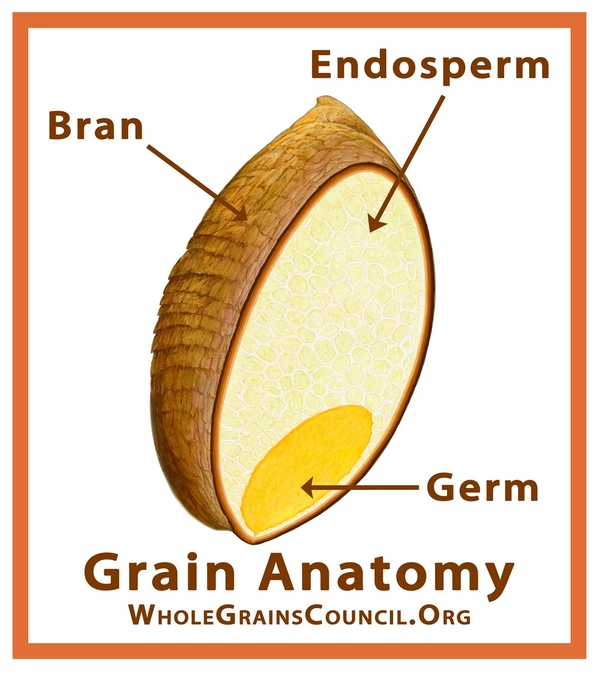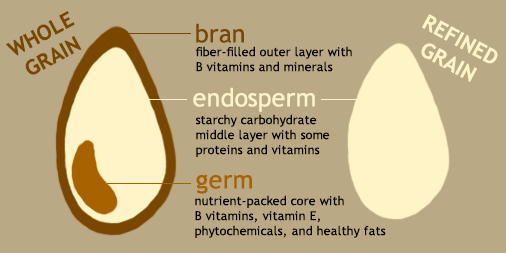
There are a ton of flours out there—all-purpose, bread, cake, pastry, whole wheat, semolina, self raising. And we’re just talking about wheat based flours right now.
They’re all slightly different with slightly different functions. Here are the most common types, what they’re all about, and when you should or shouldn’t use them.
All-Purpose or Plain Flour:
The name pretty much says it all! Nine times out of ten, this is what you’re reaching for when baking or cooking. All-purpose is your go-to option for most of your baking needs.
Standard AP flour is a white flour, meaning the wheat grains have been stripped of their bran and germ during processing and grinding, leaving just the starchy endosperm. Thus, most AP flours are more shelf stable (yeah, flour goes bad!) because it’s the oils in the germ that cause it to go rancid. It also means, unfortunately, that most of the nutritive properties of the wheat have been removed and along with them much of the natural flavor of the plant. The upside of all-purpose flour, though, is that it behaves predictably in baking.
The protein content of AP flours are standardized during processing to between 9% and 11%, depending on the brand and type of wheat used.
AP falls in the mid-range of protein levels, which makes it an appropriate choice for most baked goods like cookies, muffins and pie crust.

Bread Flour:
The main difference between bread flour and all-purpose flour is a matter of protein. Bread flour, which comes in white and whole wheat varieties, has a higher protein content than all-purpose, usually 11-13%. It’s called “bread flour” because most bread requires higher amounts of protein to produce lots of gluten. Gluten is the stringy strands that give bread dough its stretch and elasticity, and baked bread its characteristic chew. Kneading dough develops a network of gluten strands that trap air and produce the airy holes characteristic of many breads. You can use bread flour in place of AP flour when you actually want a chewier result—in pizza dough, for instance—but you don’t want to use it in place of cake or pastry flour, or in any baked goods that you want to be light and tender.
Cake and Pastry Flour:
Cake flour is used in cake-making. On the other end of the spectrum from bread flour, cake flour has a lower protein content than all-purpose. Whereas bread is supposed to be chewy, and therefore chock-full-of gluten, cake is supposed to be fluffy and tender. Gluten development is not the object, so cake flour is low in protein, usually around 9%.
Pastry flour has an even lower protein content than cake flour, clocking in around 8%, and is mostly used to make things like pie crusts, biscuits, and scones—anything where you want a tender, crumbly, or flaky texture. Feel free to swap cake or pastry flour for AP flour in recipes where tenderness is desirable (like pancakes), but not for things like flatbreads.
Whole Wheat Flour:
Whole wheat flour is made by grinding the entire kernels of hard red wheat. Because whole wheat flour has the endosperm, the wheat gem and the bran, it’s higher in nutrients and fibre.
But the bran in whole wheat flour tears the strands of gluten thus inhibiting gluten development. Whole wheat flour is also more absorbent than white flour. That necessitates the use of more liquid and results in a stickier dough, which can be challenging for beginners. You can offset the effect — and subdue the telltale whole wheat taste — by blending whole wheat and all-purpose flours.
Self-raising Flour:
This variety is a blend of all-purpose flour and baking powder. Recipes for breads, biscuits, and pancakes often call for it. Sometimes, you’ll also see it in cake and cupcake recipes. However, don’t use it in yeast breads.
Semolina Flour:
Semolina, is made from the coarsely ground endosperm of durum wheat. Durum wheat is the hardest type of wheat and semolina has the highest gluten content of all flours.
What is your favourite flour to bake with?
